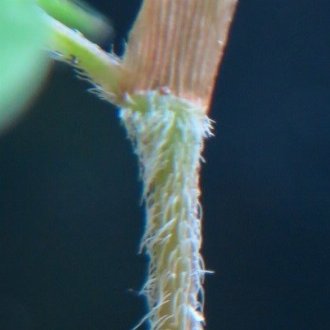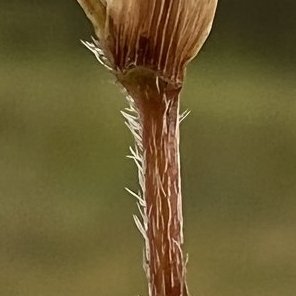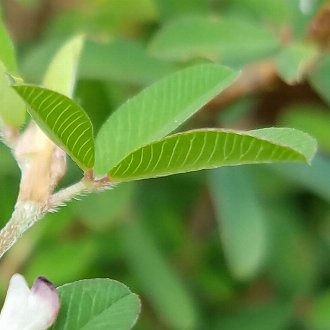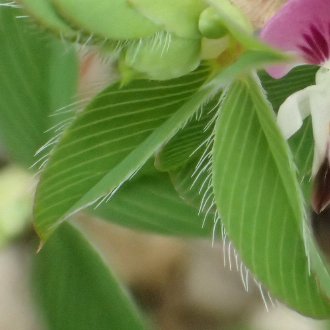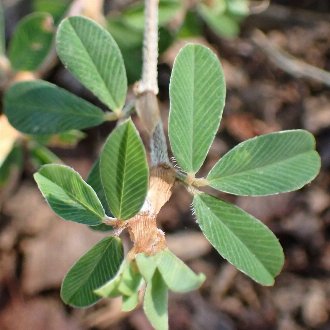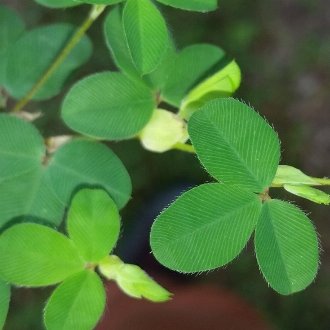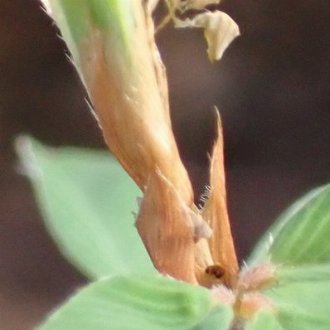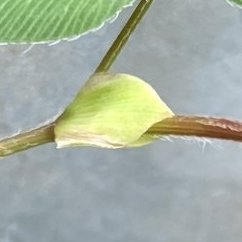Japanese Clover vs Korean Clover
These two species, both invasive in North America, are visually and ecologically similar. They can be told apart by their stipules, orientation of hairs on the stem, leaf shape, and often by hairs on the margins of new leaves. Their ranges overlap, but K. striata ranges farther south and is more tolerant of acidic soil, whereas K. stipulacea ranges farther north and tolerates slightly drier conditions as well as being more tolerant of rocky or gravely soil.
Japanese Clover (Kummerowia striata) | Korean Clover (Kummerowia stipulacea) |
An annual nitrogen-fixer that prefers sun and sandy soils, native to East Asia and invasive in the southeastern US. | An annual nitrogen-fixer preferring sun and sandy soils, native to East Asia and invasive in the central to mid-Atlantic US. |
Hairs on the stem point downwards or backwards towards the base of the plant. Photo © Evan M. Raskin, CC BY 4.0. | Hairs on the stem point upwards or forwards towards the tip of the stem. Photo © Nathan Aaron, CC BY 4.0. |
Young leaves near the stem tip have less conspicuous hairs along their margins, and may lack hairs entirely. Photo © Leila Dasher, CC BY 4.0. | Young leaves near the stem tip have conspicuous hairs along their margins. Photo © Tanya Riseman, CC BY 4.0. |
Leaflets tend to be narrower, and longer relative to their width. Photo © Cole Shoemaker, CC BY 4.0. | Leaflets tend to be broader, and shorter relative to their width. Photo © Zihao Wang, CC BY 4.0. |
Stipules (leaflike structures where each leaf meets the stem), average smaller (3-4mm long), are brown even on new growth near the tip of each stem, and have ciliate margins (edges covered with fine hairs.) Photo © Cole Shoemaker, CC BY 4.0. | Stipules are green on new growth, only becoming straw-colored with age, average larger (3-8mm long), and are entirely hairless, even at the margins. Photo © Emily Summerbell, CC BY 4.0. |
Additional Notes
These species are usually easy to tell from bush clovers (Lespedeza sp.) because they tend to have a more sprawling habit, contrasting with the more upright habit of Lespedeza species.References & External Resources
These short lists show only links helpful for ID. For a complete list of references and resources also covering other aspects of ecology, visit the links section of the full article on each plant, which is the first entry here.



